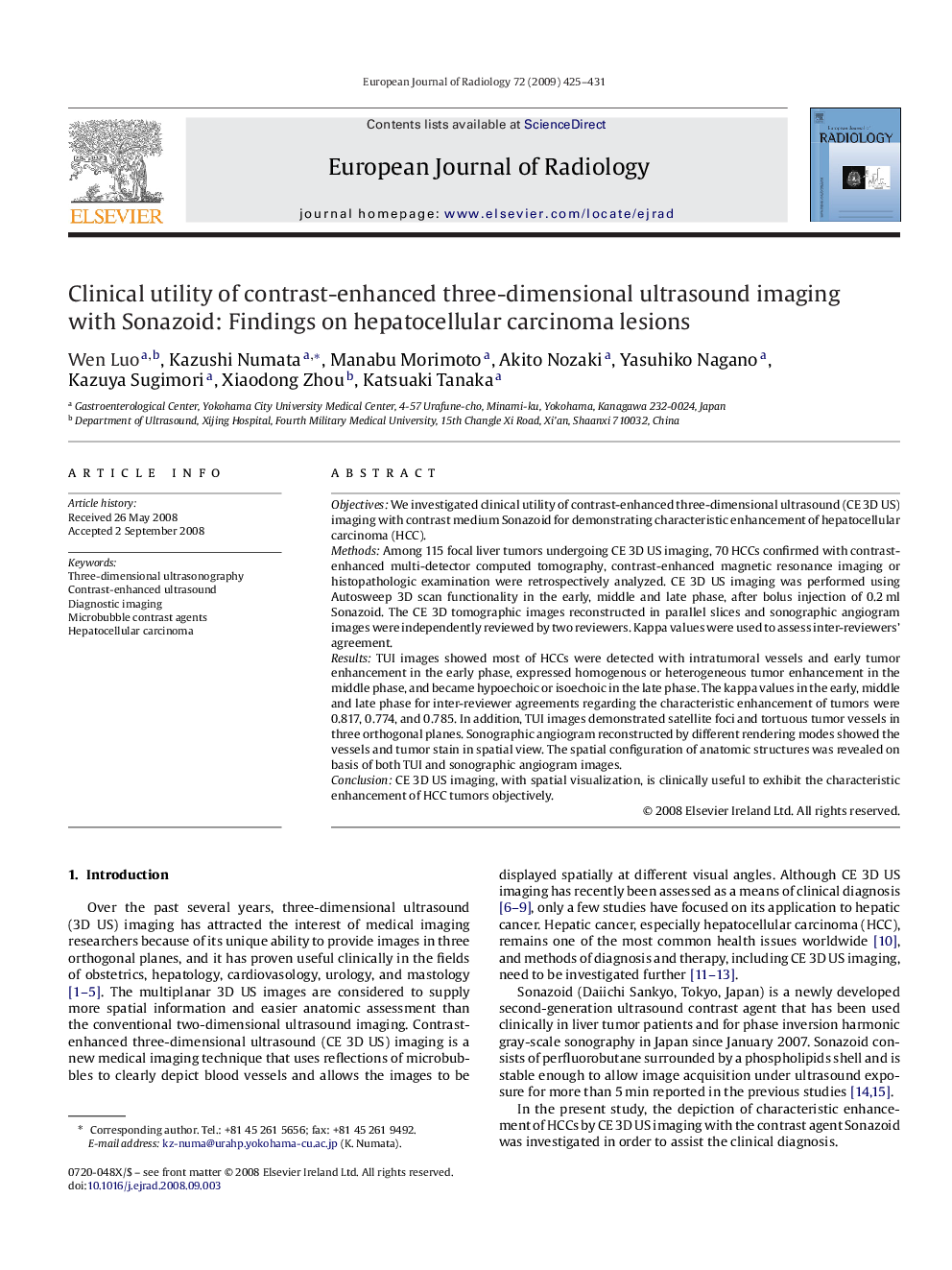| Article ID | Journal | Published Year | Pages | File Type |
|---|---|---|---|---|
| 4226813 | European Journal of Radiology | 2009 | 7 Pages |
ObjectivesWe investigated clinical utility of contrast-enhanced three-dimensional ultrasound (CE 3D US) imaging with contrast medium Sonazoid for demonstrating characteristic enhancement of hepatocellular carcinoma (HCC).MethodsAmong 115 focal liver tumors undergoing CE 3D US imaging, 70 HCCs confirmed with contrast-enhanced multi-detector computed tomography, contrast-enhanced magnetic resonance imaging or histopathologic examination were retrospectively analyzed. CE 3D US imaging was performed using Autosweep 3D scan functionality in the early, middle and late phase, after bolus injection of 0.2 ml Sonazoid. The CE 3D tomographic images reconstructed in parallel slices and sonographic angiogram images were independently reviewed by two reviewers. Kappa values were used to assess inter-reviewers’ agreement.ResultsTUI images showed most of HCCs were detected with intratumoral vessels and early tumor enhancement in the early phase, expressed homogenous or heterogeneous tumor enhancement in the middle phase, and became hypoechoic or isoechoic in the late phase. The kappa values in the early, middle and late phase for inter-reviewer agreements regarding the characteristic enhancement of tumors were 0.817, 0.774, and 0.785. In addition, TUI images demonstrated satellite foci and tortuous tumor vessels in three orthogonal planes. Sonographic angiogram reconstructed by different rendering modes showed the vessels and tumor stain in spatial view. The spatial configuration of anatomic structures was revealed on basis of both TUI and sonographic angiogram images.ConclusionCE 3D US imaging, with spatial visualization, is clinically useful to exhibit the characteristic enhancement of HCC tumors objectively.
